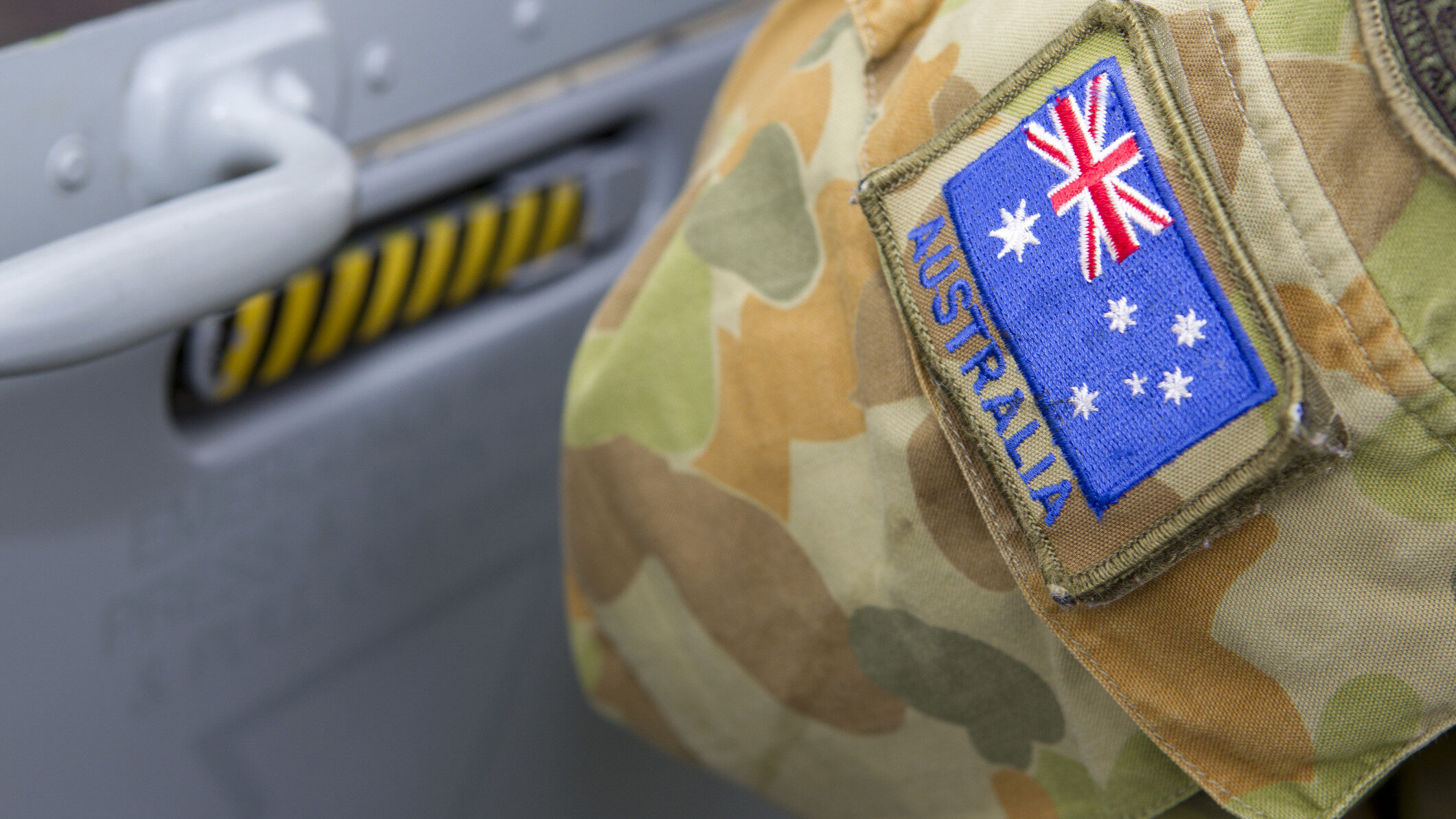The spotlight’s on ASX Defence stocks following Australia’s most significant defence review since WWII

The Federal Government has committed to working with Australian Industry to improve the country's defence capabilities. Pic: Getty Images
- The Defence Strategic Review unveils six new priority areas to shape Australia’s Defence Policy for decades to come
- Exact cost of shakeup not revealed but Government has signalled it will require “significant financial commitment”
- Bell Direct believes review presents an opportunity for investors to consider Defence stocks on the ASX
As Australia commemorated ANZAC Day the Federal Government unveiled the Defence Strategic Review, considered the most significant defence report since WWII.
The 110-page review lists six new priority areas and is expected to shape the country’s Defence policy and national security posture for decades to come.
The six priority areas as identified in the Defence Strategic Review include:
- The acquisition of nuclear-powered submarines
- Develop Australian Defence Force’s (ADF’s) long-range strike capability and the domestic manufacture of munitions
- Improve ADF’s ability to work out of Australia’s northern bases
- Improve the growth and retention of a highly-skilled defence workforce
- Lifting capacity to introduce disruptive new tech into ADF capability, in close partnership with Australian industry
- Deepening diplomatic and Defence partnerships with key partners in the Indo-Pacific.
While the exact price tag of this major Defence shakeup has not been revealed the government has signalled it will require “significant financial commitment”.
Australia’s spending on Defence as percentage of GDP is currently ~2% or ~$49 billion annually and following the review is expected to be more in coming years.
“Defence must have the funding it needs to deliver this enhanced capability,” the review said.
“To this end, Defence funding will increase over the next decade above its current trajectory to implement the Review, including the delivery of the conventionally-armed, nuclear-powered submarine program through AUKUS.”
And in a case of rob Peter to pay Paul the review said “the Government is also committed to fiscal discipline and will make the hard decisions to cancel or reprioritise defence projects or activities that are no longer suited to our strategic circumstances as outlined in the review”.
Australia’s Defence strategy
The review said Australia’s region, the Indo-Pacific, faces increasing competition that operates on multiple levels – economic, military, strategic and diplomatic – “all interwoven and all framed by an intense contest of values and narratives”.
“A large-scale conventional and non-conventional military build-up without strategic reassurance is contributing to the most challenging circumstances in our region for decades,” the review said.
“Combined with rising tensions and reduced warning time for conflict, the risks of military escalation or miscalculation are rising.”
“At the same time, the effects of climate change across the region are amplifying our challenges, while other actions that fall short of kinetic conflict, including economic coercion, are encroaching on the ability of countries to exercise their own agency and decide their own destinies.”
As mentioned in the review when it comes to Australia’s defence, the country has various challenges. Our long coastline, location amid busy shipping lanes and the growing threat of cyberwarfare also add to our defence challenges.
Yes, the nature of warfare is changing with direct confrontation giving way to cyberwarfare, broadly defined by Oxford Languages “as using computer technology to disrupt the activities of a state or organisation, especially the deliberate attacking of information systems for strategic or military purposes”.
There are new threats of war such as space, which has jurisdictions worldwide rethinking strategies of old. Russia’s threat last year to strike Western satellites aiding Ukraine raised concerns among space lawyers and industry executives about the safety of objects in orbit.
And with advances in technology also comes advances in weaponry combat with hypersonic missiles growing ever faster and more deadly. University of Colorado Boulder Professor of Aerospace Engineering Sciences Iain Boyd confirming “next-generation hypersonic missiles that Russia, China and the US are developing do pose a significant threat to national and global security.”
“These new systems pose an important challenge due to their maneuverability all along their trajectory,” he wrote in an article for The Conversation.
“Because their flight paths can change as they travel, these missiles must be tracked throughout their flight.”
He said a challenge also stems from how they operate in a different region of the atmosphere from other existing threats.
“The new hypersonic weapons fly much higher than slower subsonic missiles but much lower than intercontinental ballistic missiles,” he said.
“The US and its allies do not have good tracking coverage for this in-between region, nor does Russia or China.”
The China factor
The review also called out China’s growing military build up.
“China’s military build-up is now the largest and most ambitious of any country since the end of the Second World War,” the review said.
“This has occurred alongside significant economic development, benefiting many countries in the Indo-Pacific, including Australia.”
The review said the build-up is occurring without transparency or reassurance to the Indo-Pacific region of China’s strategic intent.
“China’s assertion of sovereignty over the South China Sea threatens the global rules-based order in the Indo-Pacific in a way that adversely impacts Australia’s national interests. China is also engaged in strategic competition in Australia’s near neighbourhood,” the review said.
However, China’s Foreign Ministry spokesperson Mao Ning reportedly hit back and said China’s national defence policy was “defensive in nature” and it doesn’t pose any challenge to any country.
Australia’s security relationships
In terms of Defence, Australia is also part of the Five Eyes Intelligence Community, which dates back to 1946 and also includes Canada, New Zealand, the UK and US.
Since 1951 Australia has been part of the tripartite ANZUS security pact, a mutual defence treaty between Australia, New Zealand and the US to protect security of the Pacific.
Consisting of four members – Australia, the US, Japan and India – the country is also part of the the Quadrilateral Security Dialogue, commonly termed the Quad.
And a legacy of the Cold War since 1971 Australia has been part of the Five Power Defence Arrangements (FPDA). Consisting of Australia, Malaysia, New Zealand, Singapore and the UK, the FPDA commits its members to consult in the case of an attack on Malaysia or Singapore.
And although Australia is not a NATO member, its ties to the organisation have reportedly grown as a result of ADF deployments to Afghanistan under the NATO-led International Security Assistance Force.
You can read more about Australia’s security relationships on the Parliament of Australia website.
Opportunity to consider Defence-related stocks
Bell Direct market analyst Grady Wulff told Stockhead the new Defence Strategic Review presents an opportunity for investors to consider defence-related stocks listed on the ASX.
“The Defence Strategic Review is the biggest Australia has seen since World War II and while it is still early days I think there certainly will be opportunities for Australian companies,” Wulff said.
“We’ve got a lot of innovative companies listed on the ASX working in the defence sector from Droneshield to XTEK positioned to work with the Federal Government and ADF to improve the country’s defence capabilities for the future.”
The views, information, or opinions expressed in the interviews in this article are solely those of the interviewees and do not represent the views of Stockhead. Stockhead does not provide, endorse or otherwise assume responsibility for any financial product advice contained in this article.
Related Topics
UNLOCK INSIGHTS
Discover the untold stories of emerging ASX stocks.
Daily news and expert analysis, it's free to subscribe.
By proceeding, you confirm you understand that we handle personal information in accordance with our Privacy Policy.








